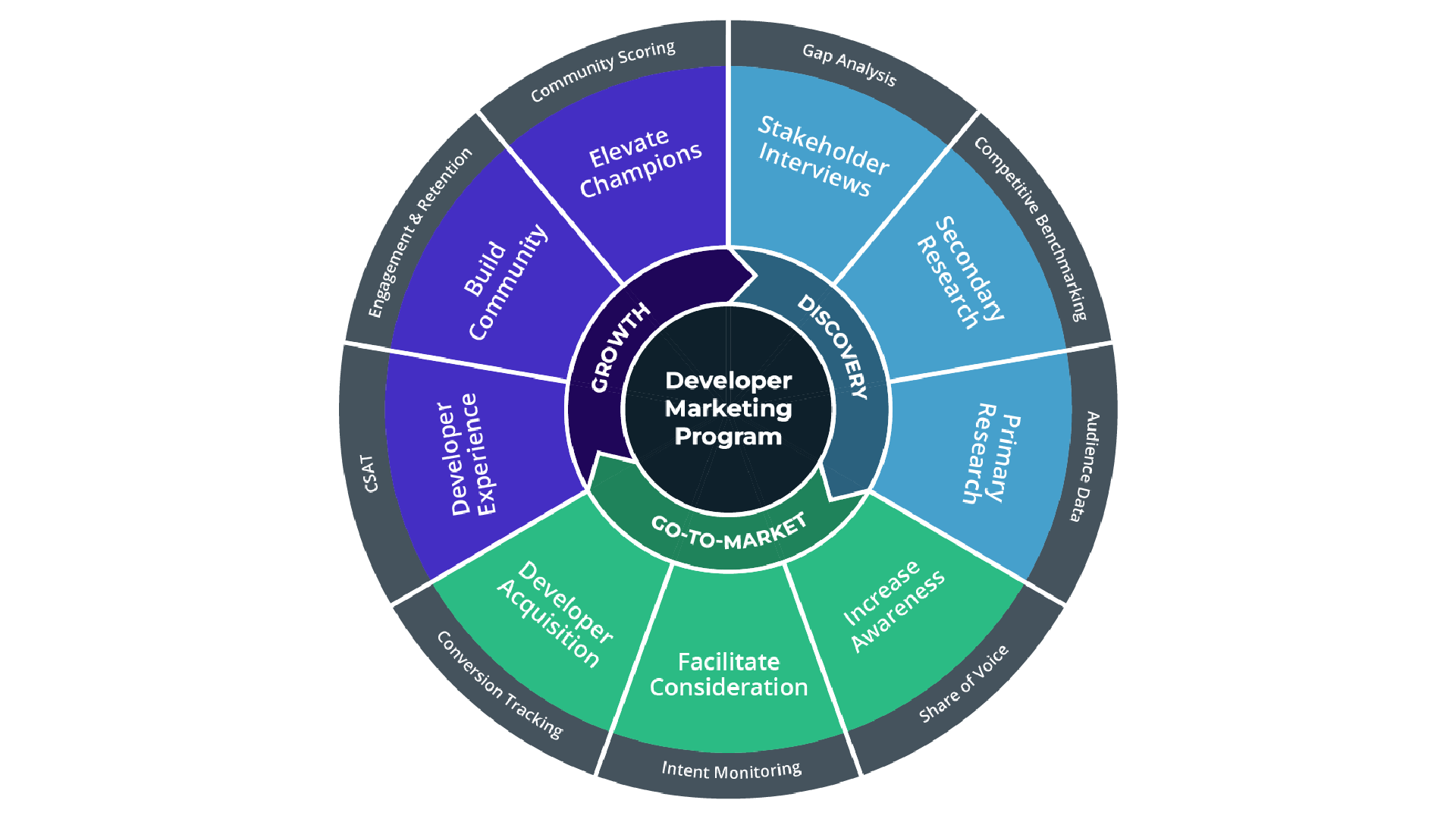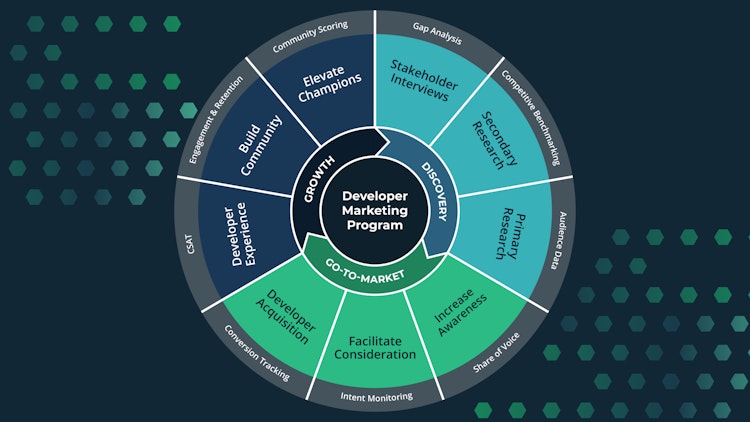After conducting stakeholder interviews and secondary research, you may still have a few unanswered questions about your product, including:
- How does your audience view your product?
- How do they engage with your product?
- What challenges do they have when using your product?
Primary research can help fill in these gaps and set you up for success when you go to market. Not all primary research methods are the same, so we recommend figuring out which of the following three (or which combination) is suitable for you.
Qualitative Research
| Category |
Method |
Goal |
| Qualitative |
Observation
Interviews
Focus groups
|
Understand mindset, needs, and pain points |
Qualitative research is great for learning about developers' attitudes toward your brand or product. Through interviews, you may discover that developers love your product’s features. Or, through focus groups, you might find that they think it’s difficult to install and use. Other observational methods, like watching them work through a “hello world,” might show that your documentation is slowing them down.
Descriptive Research
| Category |
Method |
Goal |
| Descriptive |
Sample survey
Panel survey
|
Describe, explain, and validate research findings |
Descriptive research will allow you to collect quantitative data from developers to learn more about who they are, how they work, and what they need to be successful. You can get this data from sample and panel surveys and use it to present objective information about your audience. You’ll find this especially useful for aligning multiple decision makers with conflicting views about how to approach developers.
Scientific Research
| Category |
Method |
Goal |
| Scientific |
Controlled experiment
Field experiment
|
Isolating if X causes Y |
Scientific research will allow you to test specific situations (aka hypotheses) and give you the last bits of data you need before going to market. Use experiments to isolate these situations and better understand the issues and areas for improvement. For example, you could time developers to see how long it takes them to get up to speed with your product using updated documentation.
What can you accomplish with primary research?
For example, here’s a look at a company based outside the US that wanted to launch its platform in the US. Internal stakeholders assumed the brand was globally recognizable and that awareness of their platform would be high. To test this hypothesis, Catchy surveyed US-based developers on this topic.
Key findings from the survey included low awareness and familiarity and low usage and interest. The corresponding data showed internal stakeholders that there was an awareness gap to overcome and allowed them to realign their developer marketing strategy to address this.




